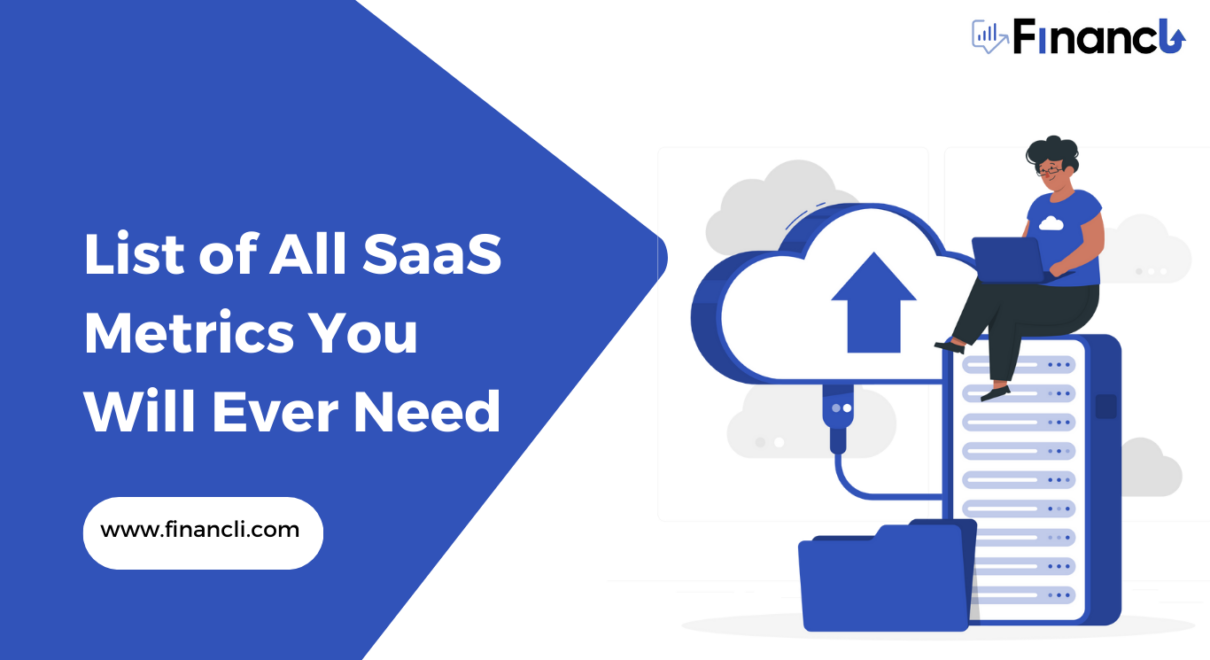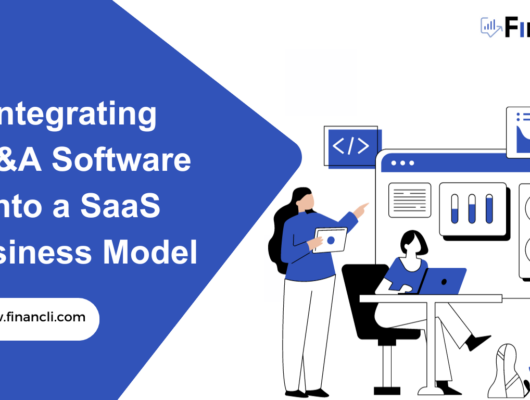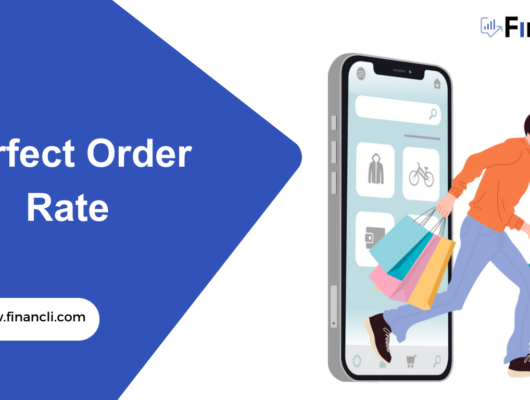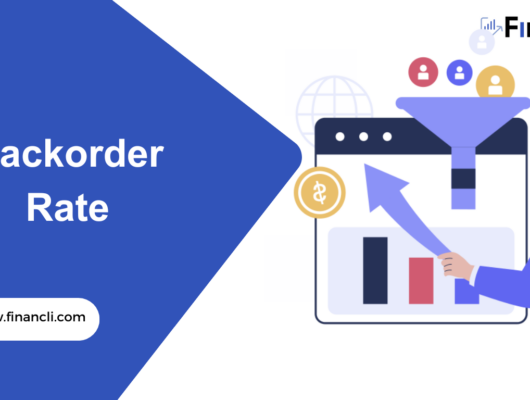List of All SaaS Metrics You Will Ever Need
In today’s world, having a successful Software as a Service (SaaS) business is critical for staying competitive. One of the most important aspects of running this business is tracking SaaS metrics. Tracking and analyzing these SaaS metrics can provide valuable insights into your business’s performance. It also tells you where your business needs improvement. Let’s examine SaaS metrics, why they’re essential, and how to use them to maximize your success.
What Are SaaS Metrics?
Simply put, SaaS metrics are performance indicators that measure various aspects of your company’s financial health. These metrics can cover everything from customer acquisition costs to revenue growth rates. For convenience, we have classified all these SaaS metrics into four categories :
- User Acquisition Metrics
- User Engagement Metrics
- User Behavior Metrics
- Financial Metrics
But There’s More to These SaaS Metrics. . .
Besides these categories, economists or policymakers tend to develop various categories or titles for SaaS metrics. These are more related to their requirements or research topics. For example, customer-related SaaS metrics focus on understanding who your customers are and how you acquire them. A few examples of customer-related metrics include customer lifetime value (LTV), churn rate, customer acquisition cost (CAC), average revenue per user (ARPU), and customer retention rate (CRR).
Understanding these key performance indicators allows you to identify trends in customer behavior. You can make data-driven decisions about marketing campaigns or product changes. That way, you could potentially increase LTV or reduce CAC, for example.
Similarly, product-related metrics focus on understanding how customers interact with your product or service. These SaaS metrics include usage frequency, feature adoption rate, engagement rate, conversion rate, average session length (ASL), and cost per feature used. By tracking these key performance indicators, you can better understand what features customers find most useful and which ones need improvement or more promotion to increase engagement or conversion rates.
Then we have operational SaaS Metrics. Operational SaaS metrics focus on understanding the company’s overall health. This happens by looking at profit margins and cash flow management. Examples of operational metrics include gross margin percentage (GMP), operating expenses ratio (OER), burn rate/cash flow management ratio (BRCM), net income margin percentage (NIMP), and return on equity/return on investment (ROE/ROI). By tracking these key performance indicators, you can gain insight into the company’s overall financial health and make decisions based on data instead of gut feeling or intuition.
TL;DR – SaaS Entrepreneurs, Pay Attention!
Any successful entrepreneur in this space needs to track their SaaS metrics to maximize their success over time.

- Customer-related metrics such as LTV, CAC, ARPU, and CRR allow them to understand who their customers are and how to acquire them.
- Product-related metrics such as usage frequency and feature adoption rate give an insight into how customers interact with the product.
- Finally, operational metrics such as GMP and OER let entrepreneurs understand their financial health and make data-driven decisions when necessary.
With this knowledge, business owners can make informed decisions about their marketing campaigns or product changes and get maximum results!
Why Your Business Cannot Ignore SaaS Metrics
As a business owner, you know that data answers questions. You also know that data helps you make decisions and plan for the future. When it comes to software-as-a-service (SaaS) metrics, this is especially true. Because without these metrics, you won’t be able to measure your organization’s software’s success accurately. Let’s take a look at why SaaS metrics are so important.
Gaining Insight into Your Customers
One of the most important reasons to track SaaS metrics is to gain insight into your customers. By understanding how customers interact with your software, you can identify areas where they may have difficulty or need more information and guidance.

This can help you fine-tune your customer experience and ensure customers get what they need from your product or service. Additionally, tracking customer usage patterns can give you valuable insight into your best customers. This will help inform future marketing strategies.
Staying Ahead of the Competition
Another reason tracking SaaS metrics is so important is because it gives you an edge over the competition. Knowing the types of features and functionality that are most popular with customers can help you stay ahead of industry trends and develop innovative solutions for common problems. It also allows you to set specific goals for improving your product or service over time to remain competitive in a rapidly changing market.

What’s more, tracking SaaS metrics will also help you identify potential weaknesses in your offerings and areas where competitors may have an advantage. Eventually, allowing you to address those issues before they become serious problems for your business.
Making Data-Driven Decisions
Finally, tracking SaaS metrics will allow you to make more informed decisions about the direction of your product or service. Access to real-time data on user behavior and preferences makes it much easier to identify areas that need improvement and develop new strategies for growth. Tracking these metrics will give you an accurate picture of how successful specific changes have been. This enables you to adjust the course quickly if something isn’t working as expected.

Access to this kind of data is essential for making sound decisions about product or service development efforts. Making decisions about how to move forward with your product or service development efforts can be much more complicated (if not impossible) without this kind of data.
In summary, keeping track of SaaS metrics is essential for any business looking to stay competitive in today’s market. Without this information, it’s almost impossible to measure success effectively or identify areas that need improvement for businesses to remain viable.
Additionally, being aware of customer behavior and preferences can give businesses invaluable insights into what their customers want from their products and services. This allows them to create better user experiences while staying ahead of the competition regarding innovative solutions and features. With all this in mind, there should be no doubt why SaaS metrics are so important!
Here are All the SaaS Metrics You Have Been Looking For. . .
Now it’s time for the most extensive list of SaaS metrics glossary to appear before you. These SaaS metrics are the true measure of your SaaS product or service’s success and will be invaluable on your journey to success. Let’s begin:
I. User Acquisition Metrics
When running a successful SaaS business, user acquisition metrics are essential. Understanding these key metrics can help you understand how your business is performing. And where you should focus your efforts for optimal growth. In this section, we’ll break down what SaaS user acquisition metrics are, their role in measuring success, and what you can track with them.

What are SaaS User Acquisition Metrics?
In its most basic form, user acquisition metrics measure the performance of your customer acquisition strategy. They provide data-driven insights about your strategies’ effectiveness at acquiring and retaining customers. Analyzing these metrics lets you understand which channels or methods work best for different audiences and demographics.
What Role Do These Metrics Play?
User acquisition metrics are integral in helping business owners make informed decisions about their customer acquisition strategies. By tracking and analyzing these metrics, you can identify areas of improvement and adjust your strategies accordingly to increase conversions and lower customer acquisition costs (CAC). Additionally, they can help identify the types of campaigns and promotional activities that resonate most with customers so that you can allocate resources more effectively.
What Can You Measure or Track With Them?
There are several types of user acquisition metrics that you should be tracking if you want to get an accurate picture of your customer acquisition strategy’s performance. These metrics will provide insight into different aspects of your customer journey, such as engagement rates, loyalty levels, purchase frequency, etc. Ultimately, this will inform the success of your campaign or promotion.
In summary, SaaS user acquisition metrics are critical for measuring the effectiveness of any digital marketing effort. Or promotional activity that you aim at driving new customers to a website or app.
By tracking these key performance indicators over time, entrepreneurs can gain valuable insights into their audience’s preferences and behaviors that will ultimately help them optimize their marketing efforts to achieve desired outcomes while keeping costs low.
1. Customer Acquisition Cost (CAC)
Knowing the customer acquisition cost (CAC) is one of the most important metrics for understanding how much money you need to spend to acquire new customers. The CAC metric is typically calculated by adding up all your expenses related to acquiring customers, such as advertising, marketing, sales commissions, etc., and then dividing that number by the total number of customers acquired during a given period.

You can calculate customer acquisition costs using this formula:
CAC = Cost of Sales and Marketing / Number of New Customers Acquired
For those interested in details, here is our experts’ detailed coverage of CAC.
2. CAC Payback Period/Months to Recover CAC
As the name suggests, the CAC Payback period gives SaaS business owners an idea of how long it will take to recover the customer acquisition costs. You can calculate it by dividing the Customer Acquisition Cost (CAC) by the Average Revenue Per User (ARPU).
CAC Payback Period/Months to Recover CAC = CAC / ARPU
The result will be in months and can give SaaS business owners a better understanding of where their product or service stands regarding user acquisition cost-effectiveness. You can also use this SaaS metric to understand how long it will take for a SaaS business to break even on its customer acquisition costs.
For those interested in details, here is our experts’ detailed coverage of the CAC Payback Period/Months to Recover CAC.
3. Lead-to-Customer Rate
The lead-to-customer rate is a metric that measures how many leads you convert into actual paying customers. This metric can help determine which marketing channels are the most effective in generating quality leads that result in conversions. Also, this SaaS metric greatly indicates your sales team’s effectiveness at closing leads.

You can calculate it by dividing the number of customers acquired during a given period by the total number of leads generated.
Lead-to-Customer Rate = Number of Customers Acquired / Number of Leads Generated
For those interested in details, here is our experts’ detailed coverage of the Lead-to-Customer Rate SaaS Metric.
4. Leads By Lifecycle Stage
This SaaS metric measures how many leads you have at each stage in the customer journey, from initial contact to final conversion. Knowing this SaaS metric helps SaaS Business Owners to identify which stages are falling short and need more attention, allowing them to focus their efforts on underperforming areas.

You can calculate it by dividing the number of leads at a particular stage in the customer journey by the total number of leads generated.
Leads By Lifecycle Stage = Number of Leads at Particular Stage / Total Number of Leads Generated
For those interested in details, here is our experts’ detailed coverage of the SaaS metric: Leads By Lifecycle Stage.
5. Market Size – TAM, SAM, and SOM
Market size SaaS metrics measure your product or service’s potential market share in terms of the Total Available Market (TAM), Serviceable Available Market (SAM), and Serviceable Obtainable Market (SOM).

TAM is the total market size your SaaS business can enter. At the same time, SAM is a more narrow subset and the portion of TAM you can reach with your SaaS product or service. SOM refers to the portion of SAM that will purchase your SaaS product or service.
Here is how you can calculate TAM, SAM, and SOM:
TAM = (Total Population or Customer Base) x (Average Annual Spending per Customer)
SAM = (Total Population or Customer Base) x (Percentage of Population or Customer Base Targeted by the Company) x (Average Annual Spending per Customer)
SOM = SAM x (Percentage of SAM the Company Can Realistically Capture)
For those interested in details, here is our experts’ detailed coverage of the SaaS metric: Market Size – TAM, SAM, and SOM.
6. MQL (Marketing Qualified Lead)
In the context of SaaS, MQL refers to a lead or potential customer who has demonstrated interest in a company’s product or service based on specific marketing criteria such as demographics, behavior, or engagement.
An MQL is typically someone who has interacted with a company’s marketing materials, such as visiting the company’s website, downloading a whitepaper or e-book, attending a webinar, or filling out a form to request more information.

Once you identify a lead as an MQL, you can further nurture and engage them with targeted marketing efforts to move them down the sales funnel toward becoming a sales-qualified lead (SQL) and, ultimately, a paying customer.
In short, MQL measures the progress of leads through the sales funnel. It gives SaaS business owners an indication of which marketing efforts are working, allowing them to focus more on campaigns that drive results and less on those that are not.
You can calculate it by dividing the number of MQLs generated in a given period by the total number of leads generated.
MQL = Number of Marketing Qualified Leads / Total Number of Leads Generated
For those interested in details, here is our experts’ detailed coverage of the SaaS metric: MQL (Marketing Qualified Lead).
7. QMT (Qualified Marketing Traffic)
Qualified Marketing Traffic refers to the process of filtering and qualifying inbound traffic to a website or landing page, typically using various marketing tactics, such as search engine optimization (SEO), pay-per-click (PPC) advertising, social media marketing, and other forms of online advertising.

QMT involves optimizing marketing campaigns and channels to attract and target high-quality traffic that is more likely to convert into leads and sales. It is a process of identifying and prioritizing the most valuable traffic sources for a company’s marketing efforts.
In summary, while MQL and QMT are related to lead generation and qualification, they refer to different stages of the marketing and sales process. MQL refers to a qualified lead who has shown interest in a company’s product or service, while QMT refers to the “process” of filtering and qualifying inbound traffic to a website or landing page.
You can calculate SaaS QMT by dividing the total number of leads generated in a given period by the total number of website visits.
QMT = Total Number of Leads Generated / Total Number of Website Visits
For those interested in details, here is our experts’ detailed coverage of the SaaS metric: Qualified Marketing Traffic.
8. SQL (Sales Qualified Lead)
SQL (Sales Qualified Lead) is the stage of the SaaS customer journey when an MQL has been qualified and deemed ready to be converted into a paying customer.

At this point, sales representatives reach out to the lead and further qualify them through interactions, such as phone calls, emails, or in-person meetings. The goal is to get the lead to purchase the SaaS product or service.
Unlike TAM, SAM, and SOM, there is no specific formula for calculating SQL (Sales Qualified Lead) in SaaS. You can determine SQL based on a set of criteria your company’s sales and marketing teams have defined.
However, the process of identifying an SQL usually involves a series of steps and assessments, including:
Lead Generation
Attracting potential customers through various marketing channels such as email marketing, social media, or paid advertising.
Lead Qualification
Determining whether a lead meets specific criteria, such as budget, authority, and need, to move further down the sales funnel.
Lead Scoring
Assigning a numerical score to a lead based on demographics, behavior, and engagement to prioritize sales efforts.
Sales Engagement
Engaging with the qualified lead through targeted sales, such as product demos, negotiations, and addressing objections.
Closing the Deal
Converting the qualified lead into a paying customer through a successful sales process.
Understanding these user acquisition metrics will help SaaS industry CFOs make better decisions about their budgeting strategies and allocate resources more effectively towards initiatives that yield positive returns on investment over time.
Tracking and analyzing metrics regularly against industry benchmarks can help SaaS business owners spend their resources wisely. This approach can help them acquire more customers quickly and efficiently at reasonable costs. Additionally, monitoring changes in user behavior through these metrics can help identify areas where you can improve.
II. User Engagement Metrics
It’s no secret that understanding your customer engagement metrics is key to the success of your SaaS business. Knowing how customers use and interact with your service can help you make more informed decisions about product roadmaps, marketing strategies, and customer support initiatives. But how can they help you improve the performance of your business? Let’s explore.
User engagement metrics measure how users interact with your product or service. This could include anything from time spent in an app, features used, number of active users, user retention rate, and even survey feedback. By tracking these metrics over time, you can gain valuable insights into the overall health of your SaaS business. You can identify areas where you need to make improvements or changes.

There are several ways to measure user engagement metrics. The most common method is through an analytics platform such as Google Analytics or Mixpanel.
These platforms track every action taken by a user on your website or in your app and provide detailed reports on usage patterns. This way, you can see which features they use the most and which ones need improvement.
Additionally, many SaaS businesses incorporate customer feedback surveys into their user engagement strategy to better understand how customers use their products or services. By analyzing user engagement metrics, business owners can identify growth opportunities. Specifically, these metrics can highlight areas where the product needs improvement.
Finally, measuring these metrics over time will allow you to track changes in usage patterns which could indicate problems with retention or other issues that need addressing quickly to prevent revenue loss.
9. Activation Rate
Activation rate is the percentage of users who have successfully completed vital onboarding activities and achieved a specific desired outcome within a SaaS product or service. For example, activating could be creating an account and completing the first purchase. Or using the SaaS product for at least 5 minutes.

The formula for calculating the activation rate is as follows:
Activation Rate = (Total Number of Activations / Total Number of Users) * 100
10. Average Sessions Per Day
Average sessions per day are the average number of times users log in to a SaaS product or service within a day, week, or month. This metric can show SaaS companies how engaged their users are and whether they are actively using the SaaS product or service.

The formula for calculating average sessions per day is as follows:
Average Sessions Per Day = (Total Number of Sessions / Total Number of Days)
11. Customer Count
Customer count is the total number of paying customers a SaaS company has acquired. This metric helps SaaS companies understand how their customer base grows over time. Using this, they can then measure the success of user acquisition initiatives.

The formula for calculating customer count is as follows:
Customer Count = Total Number of Customers Who Have Purchased SaaS Product/Service
12. Customer Engagement Score
Customer Engagement Score (CES) in SaaS (Software as a Service) measures customers’ engagement with a company’s product or service. The CES helps SaaS companies assess their customers’ satisfaction and loyalty. They do this by tracking how often they use the product, how satisfied they are with it, and how likely they are to renew or refer it to others.
The importance of CES lies in its ability to help companies identify how well they are meeting the needs and expectations of their customers. By tracking customer engagement over time, companies can better understand their customer’s behavior, preferences, and pain points. They can use this information to improve their product or service offering, customer support, and overall customer experience.
To calculate CES, SaaS companies typically use a combination of qualitative and quantitative measures, such as:
Product Usage
Tracking how often customers use the product, how long they spend on it, and which features they use the most.
Feedback
Soliciting customer feedback through surveys, ratings, and reviews to gauge their satisfaction and identify areas for improvement.
Renewal Rates
Tracking how many customers renew their subscriptions or contract with the company indicates their satisfaction and loyalty.
Referral Rates
Tracking how many customers refer the product or service to others as an indicator of their satisfaction and loyalty.
Support Interactions
Tracking the number and type of support interactions with customers to identify patterns and areas for improvement.
Customer Lifetime Value (CLTV)
Calculating the CLTV of customers, which considers their spending over time and their likelihood to renew or refer the product.
By combining these measures into a single score or index, SaaS companies can comprehensively view their customers’ engagement and satisfaction. Also, they improve their product development, marketing, and customer support strategies using this information.
13. Customer Health Score
Contrary to popular belief, Customer Health Score (CHS) and Customer Engagement Score (CES) differ. However, they are both crucial metrics that help companies understand and manage their customer relationships.

While CES focuses on measuring the overall engagement of customers with a company’s product or service, CHS is a more holistic metric that considers a broader set of factors that can impact the health of the customer relationship.
CHS typically includes measures such as:
Product Usage
Tracking how frequently and effectively customers use the product or service.
Customer Satisfaction: Measuring customers’ satisfaction with the product or service using metrics such as Net Promoter Score (NPS) or Customer Satisfaction Score (CSAT).
Support Interactions
Tracking the number and type of support interactions with customers to identify patterns and areas for improvement.
Renewal Rates
Tracking how many customers renew their subscriptions or contract with the company indicates their satisfaction and loyalty.
Expansion Opportunities
Identifying opportunities to upsell or cross-sell products or services to customers.
By combining these factors into a single score or index, CHS provides a more comprehensive view of the health of the customer relationship. This includes potential risks and opportunities for improvement.
14. Customer Interaction
We all know what’s customer interaction with any business. But when it comes to SaaS companies, what does customer interaction look like?

Customer interaction is the collective activities customers engage in when interacting with a SaaS company’s services and products. This includes everything from signing up for an account to setting up their profile, navigating the product or service, submitting tickets/feedback, and more. So, Customer interaction is a SaaS metric that measures the frequency and quality of interactions between customers and a company. You can measure it using several indicators, such as:
The Number of Support Interactions
Tracking the number of customer support inquiries to identify patterns or areas for improvement.
Average Time to Resolution
Measuring the average time it takes for customer issues to be resolved.
Average Response Time
Measuring how quickly you answer customer inquiries.
Quality of Support Interactions
Soliciting customer feedback on their satisfaction with support responses.
15. Customer Retention
Again, we all know what customer retention is: the ability of a business to keep customers from leaving. SaaS companies measure this metric regarding churn rate (or net customer retention rate).

So, it is a SaaS metric that measures the ability of a company to keep customers over time. You can typically measure it using several indicators, such as:
Retention Rate
Tracking the proportion of customers who remain active with a company’s product or service over time (e.g., monthly/yearly customer retention rate).
Churn Rate
Tracking the proportion of customers who stop using the product or service over time (e.g., monthly/yearly churn rate).
Average Length of Contract
Measuring how long customers stay with a company before canceling their subscription or contract.
By tracking these metrics, SaaS companies can understand why customers are leaving and identify potential opportunities for improvement in their products or service.
16. Depth of Usage

Since SaaS companies typically provide subscription-based services, they often measure the depth of usage to track how customers use their products and services over time. Depth of usage measures the extent to which customers use a company’s product or service in terms of features, functionality, and capabilities. You can determine the depth of usage by using several indicators, such as:
Average Number of Features Used
Tracking the average number of features customers use over time to identify potential opportunities for improvement in usage patterns.
Average Time Spent Using Product/Service: Measuring how long customers engage with a company’s product or service.
Number of Logins per User
Tracking how frequently users log into the product or service indicates engagement and satisfaction.
By tracking these metrics over time, SaaS companies can identify opportunities for improvement in usage patterns and customer engagement.
17. Seat Utilization Rate

Of course, the term “seat” here is a metonymy for a license or the number of users subscribing to a SaaS product at any time. Seat utilization rate is a SaaS metric that measures the proportion of seats (or licenses) used at any given time. You can calculate it using this formula:
Seat Utilization Rate = (Number of Active Users / Total Number of Seats) x 100
For example, if a SaaS company had 50 active users and 100 available seats, its utilization rate would be 50%. By tracking this metric over time, SaaS companies can understand how effectively they utilize their resources and identify areas where they can increase efficiency.
18. Qualitative Feedback
Qualitative feedback, in terms of SaaS, measures customer satisfaction with a company’s product or service from their perspective. You can collect it through surveys, interviews, focus groups, and other methods of soliciting customer qualitative data. By tracking this metric over time, SaaS companies can gain insight into how their customers perceive them and identify potential opportunities for improvement in their products and services.

You cannot calculate or measure qualitative feedback by a formula. But you can quantify it through qualitative data analysis methods. For example, thematic analysis or sentiment analysis. SaaS companies may use these methods to identify key themes in customer feedback and measure the sentiment towards their product or service. This enables SaaS companies to gain insights into how customers feel about their products or service and identify opportunities for improvement.
19. Net Promoter Score (NPS)
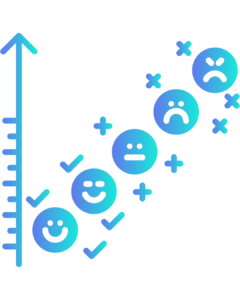
Net Promoter Score (NPS) is a SaaS metric that measures customer loyalty by asking customers to rate the likelihood they will recommend a company’s product or service to others on a scale of 0-10. You can calculate the NPS using this formula:
NPS = % Promoters – % Detractors
For example, if a SaaS company had 20% promoters and 10% detractors, their NPS would be 10. By tracking this metric over time, SaaS companies can identify potential opportunities for improvement in customer loyalty and build stronger relationships with their customers.
And here, we are done with the user engagement metrics. These SaaS metrics are essential for SaaS companies to measure their success and identify potential opportunities for improvement in customer engagement, loyalty, and depth of usage. If SaaS companies track these metrics over time, they can gain valuable insights into their customers’ behavior and preferences and make more informed decisions to benefit the company. Now it’s time for us to move toward user behavior metrics.
III. User Behavior Metrics
The Software as a Service (SaaS) industry has grown exponentially in recent years. And companies operating in this space are increasingly focusing on user behavior metrics. These metrics provide valuable insights into how users interact with SaaS products and services. Also, they can help companies optimize their offerings to better meet user needs and preferences.

User behavior metrics can range from simple measures like the number of active users to more complex metrics like net dollar retention and LTV to CAC ratio. Regardless of your specific metric, the goal is to understand better how users engage with a product or service and identify improvement areas.
In this context, understanding user behavior metrics has become a crucial component of success for SaaS companies. By tracking and analyzing these metrics, companies can make data-driven decisions about allocating resources and prioritizing product development initiatives. This can increase user satisfaction, retention, and revenue growth.
So, let’s delve into some of the most critical user behavior metrics for the SaaS industry, providing detailed definitions, formulas, and examples of how each metric is used.
20. Churn Rate
The churn rate is the percentage of customers who stop using your product or service over a period. It is an important metric that reflects the health of a company’s customer base and helps to identify how many customers the company is losing and why. A high churn rate indicates that a company is losing customers faster than it can acquire new ones. This can significantly impact revenue growth and profitability.
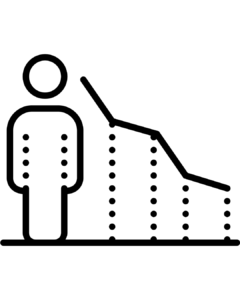
Formula
Churn Rate = (Number of Customers Lost in a Period / Total Number of Customers at the Beginning of the Period) x 100%
For example, suppose you have 1,000 customers at the beginning of a month. Fifty of them cancel their subscription by the end of the month. In that case, your monthly churn rate would be 5%.
21. Deferred Revenue
Deferred revenue is the money a company receives in advance from customers for products or services that have not yet been delivered or earned. In conventional terms, you may know it as “unearned revenue.”
So, deferred revenue is a liability on a company’s balance sheet. It would help to recognize it as revenue when you deliver the product or service. It is an essential metric for SaaS companies that charge their customers upfront for long-term subscriptions.
Since no formula is available for calculating deferred revenue in a particular SaaS company, consulting with the company’s accounting or finance department may be necessary to determine how they track and recognize deferred revenue. This can vary depending on the specific accounting practices your company uses. And it is essential to ensure that any calculations comply with generally accepted accounting principles (GAAP) or international financial reporting standards (IFRS) as applicable.
In some cases, it may be necessary to review the company’s financial statements to determine the amount of deferred revenue. You can find it in the balance sheet, where deferred revenue is listed as a liability until it is recognized as revenue in future periods.
Ultimately, calculating deferred revenue in the SaaS industry will depend on the company’s specific practices and accounting principles.
For Example, suppose a customer pays a $1,200 annual subscription fee upfront on January 1st. But the services are delivered evenly over the year. The company will record $100 of deferred revenue each month until the service is fully delivered.
22. LTV to CAC Ratio / CAC: LTV Ratio
The LTV to CAC ratio measures the relationship between a customer’s lifetime value (LTV) and the cost of acquiring that customer (CAC).
And LTV is the total revenue from a customer over their relationship with a company. The CAC is the cost of acquiring a new customer. So, the LTV to CAC ratio is an important metric because it helps companies determine the efficiency of their customer acquisition strategy. A high ratio indicates that a company generates more revenue from each customer than it spends to acquire them.
Formula
LTV to CAC Ratio = LTV / CAC
For example, suppose the lifetime value of a customer is $1,000. And the cost of acquiring that customer is $200. In that case, LTV to CAC ratio would be 5:1.
23. Net Churn
Net churn is a metric that measures the percentage change in revenue due to customer loss and expansion over a given period. It considers customer churn (i.e., lost revenue due to canceled subscriptions) and customer expansion (i.e., increased revenue due to upgrades or cross-selling).
A negative net churn rate indicates that the company is generating more revenue from existing customers than it is losing from canceled subscriptions.
Formula
Net Churn = (Revenue from Lost Customers – Revenue from Expanded Customers) / Total Revenue at the Beginning of the Period x 100%
For example, suppose you lose $1,000 in monthly recurring revenue (MRR) from customers who cancel their subscriptions. Then you gain $500 in MRR from customers who upgrade their subscriptions. And your total MRR at the beginning of the period was $10,000. In this case, your net churn rate for the period would be 5%.
24. NDR
Net Dollar Retention (NDR) is a metric that measures the percentage change in revenue from existing customers over a given period. It considers any expansion or contraction. Also, it reflects the company’s ability to retain and grow revenue from its existing customer base. A high NDR indicates that a company retains its customers and increases their usage or value over time.
Formula
NDR = [(Current MRR from Existing Customers + Expansion MRR – Contraction MRR) / Previous MRR from Existing Customers] x 100%
For example, suppose your MRR from existing customers at the beginning of the period was $100,000, and you gained $10,000 in MRR from upgrades and lost $5,000 in MRR from downgrades, and your current MRR from existing customers is $105,000, your NDR would be 105%.
25. Number of Active Users (NAU)
The number of active users (NAU) is a metric that measures the number of unique users who have logged into a product or service within a given period. It is an essential metric for SaaS companies because it reflects the engagement and usage of their product or service. A high NAU indicates that the product is used frequently and provides value to customers.
It is quite evident that you don’t need any formula to calculate this metric. However, it’s important to note that the definition of an “active user” may vary from one SaaS company to another.
For example, for a SaaS video streaming service, an active user could log into the app at least once a week and watch at least one video. On the other hand, for SaaS CRM software, an active user could log into the app at least once a month and update or add new records.
26. Number of Contractions
The number of contractions is a metric that measures the number of customers who downgrade their subscription or reduce their usage within a given period. It is an essential metric for SaaS companies because it reflects customer satisfaction and engagement with the product or service. Many contractions can indicate that customers are not finding the product value and may be at risk of canceling their subscription.
How do you measure your number of contractions?
Formula
Number of Contractions = Total Number of Downgrades / Total Number of Customers x 100%
For example, suppose you have 100 customers, and 10 of them downgrade their subscription in a month. In this case, your number of contractions would be 10%.
27. Number of Expansions
The number of expansions is a user behavior metric that measures the number of customers who have upgraded or expanded their use of a SaaS product or service beyond their initial purchase or subscription. This metric reflects the success of a SaaS company in increasing customer loyalty and generating additional revenue streams.
Formula
There is no specific formula for calculating the number of expansions. As this metric is typically tracked by analyzing customer usage data and identifying instances where customers have upgraded or added new services to their accounts.
For example, suppose a SaaS company offers a basic subscription package and an upgraded premium package. The number of expansions would be the number of customers who have upgraded from the basic to the premium package. You can further break this metric by time period, customer segment, or other variables to provide more detailed insights into customer behavior.
28. Number of Reactivations
The number of reactivations is a user behavior metric that measures the number of customers who have reactivated their account or resumed using a SaaS product or service after a period of inactivity or cancellation. This metric reflects the success of a SaaS company in retaining customers and re-engaging with them to generate additional revenue streams.
Formula
There is no specific formula for calculating the number of reactivations. But you can track it by analyzing customer usage data. You can also identify instances where customers have resumed using a SaaS product or service after inactivity or cancellation.
For example, suppose your SaaS company has a customer who cancels their subscription but later reactivates it. The number of reactivations would increase by one. You can trim this metric by time period, customer segment, or other variables to provide more detailed insights into customer behavior.
So, that was it for the user behavior SaaS metrics. SaaS companies leverage these metrics to measure and analyze customer engagement, satisfaction, loyalty, and responsiveness.
Now that we have discussed SaaS user behavior metrics let’s move on to financial SaaS metrics.
IV. SaaS Financial Metrics
If you’re a CFO or SaaS entrepreneur, you’ve likely heard about the importance of tracking and understanding financial metrics for your business. But what are these metrics, exactly? And why are they so important to follow?
Simply put, SaaS financial metrics are key performance indicators (KPIs) used to measure the health and performance of a SaaS company. These metrics can be applied to any company offering services on a subscription basis. For example, those providing software access over the internet.
Tracking these KPIs will help you understand how well your products and services perform. Also, making informed decisions about where to focus your efforts for maximum return on investment (ROI) will be easier.
Why Are SaaS Financial Metrics Important?
Financial metrics provide invaluable information about how customers perceive your product or service, how much money you’re making from it, and how quickly it’s growing. For example, tracking customer churn rate—the rate at which customers stop using your product or service—can provide valuable insight into why certain customers may have chosen not to renew their subscriptions.

You can then use this information to improve customer loyalty and retention rates. Additionally, tracking customer lifetime value (CLV) will help you better understand the average value of each customer over time. Knowing this information can ensure you focus on attracting high-value customers who stay with you longer.
What Can SaaS Companies Track With These Metrics?
The list of potential KPIs to track is vast but includes some common ones like monthly recurring revenue (MRR), gross margin percentage (GMP), cost per acquisition (CPA), cost per click (CPC), average contract length (ACL), annual run rate (ARR), customer lifetime value (CLV), net promoter score (NPS), customer satisfaction index(CSI), annual recurring revenue churn rate (ARRChurnrate).
These KPIs can provide valuable insights into your business operations to optimize them for maximum efficiency and profitability.
29. ACV (Annual Contract Value)
ACV measures how much money customers spend annually with your company. It’s essential to keep an eye on this metric as it can tell you if customers are using more or fewer services than they were in the past. The higher the ACV, the more profitable your business will be.
Formula
ACV = Total contract value / Contract Length in Years
For example, suppose a SaaS company has an annual contract value of $30,000, and the customer signed up for a three-year contract. The ACV for that customer would be $10,000 ($30,000 / 3).
30. ARR (Annual Recurring Revenue)
Annual Recurring Revenue is similar to ACV but measures the recurring revenue from customers over a one-year period. ARR gives you an idea of how much revenue your company can expect from its existing customers over time. This metric helps provide insight into customer loyalty and engagement. So, tracking it regularly is important for understanding cash flow and profitability.
Formula
ARR = Total Number of Customers x Average Annual Revenue per Customer
For example, Suppose you have 100 customers who pay $1,000 yearly for a subscription service. In that case, your ARR would be $100,000.
31. Average Revenue Per User/Average Revenue per Account
This metric tells you how much each user or account spends with your company in a month or year. Knowing this figure helps give insight into customer behavior and shows which users spend the most or least with your business. You can use this information to target marketing campaigns better. In addition, you can optimize pricing structures for maximum efficiency and profit.
Formula
Average Revenue Per User(ARPU) = Total revenue generated from users/accounts
Average Revenue Per Account (ARPA) = Number of users / accounts
For example, if you have 1,000 users who generate total revenue of $10,000 monthly. Then your ARPU would be $10 ($10,000 / 1,000). Similarly, if you have 100 accounts, that generate $50,000 in revenue annually. Then your ARPA would be $500 ($50,000 / 100).
32. Bookings
Bookings are the total value of contracts signed during a specified period of time. They provide important insights into the financial health of your company. Bookings measure the amount of revenue generated in a given period of time. This metric provides insight into the total amount of money coming into your business from new customers or customer renewals within that time frame. You report bookings on an accrual basis, meaning you tack them when signing contracts, not necessarily when you receive payments.
Formula
The formula for calculating “bookings” is simple. You take the sum total of all contracts you signed in a given period. Then divide them by the number of months in that same period.
SaaS Bookings = Sum of all signed contracts value / Number of months in that period
To illustrate this formula in action, let’s say your SaaS business signs three new contracts in January worth $20k each for 12-month terms ($60k total).
You would divide $60k by 12 months (January through December), which comes out to $5k per month in bookings for January ($60k / 12 = $5k).
This number represents the revenue you made from those three contracts being signed that month. Even though you won’t receive payment until later on throughout the year as monthly installments or one lump sum at year-end, depending on how your contract stipulates payment terms (monthly vs. annual).
33. Burn Rate
Burn rate is a term that refers to the rate at which a company spends its available funds or capital to maintain its operations and activities. It is particularly important for startups or businesses that are not yet profitable.
The financial burn rate report is a critical tool for SaaS companies. The report provides insights into a company’s financial health by analyzing the monthly or quarterly expenses and the remaining cash balance. It helps the management to determine how long the company can sustain its operations based on the available cash reserves.
Formula
Burn Rate = (Total Operating Expenses – Non-Cash Expenses) / Number of Months Before Cash Runs Out
A “good” burn rate for a SaaS company can vary depending on its growth stage, revenue and profitability trajectory, and the funding it has raised. Ultimately, the burn rate considered “good” for a SaaS company will depend on the company’s circumstances and goals. SaaS companies can carefully manage their cash flow by tracking their burn rate. This is particularly important as they often have a longer runway before they become profitable.
34. Cash Runway
The Cash Runway metric measures a company’s time before it runs out of money based on its current cash flow. It estimates when the company will need additional financing or other sources of capital to sustain its operations. This metric aims to keep entrepreneurs aware of their financial situation so they can make informed decisions about their business’s short-term and long-term goals.
Formula
The formula for calculating cash runway is simple: divide your current cash balance by your monthly burn rate (the amount of money you spend each month).
Cash Runway = Cash Balance / Monthly Burn Rate
This calculation will estimate how long your company has before it runs out of cash. For example, if you have $1000 in cash and you spend $100 per month on operating expenses. Then your cash runway would be 10 months (1000/100 = 10).
Example
You can use cash runway in various ways depending on your particular needs. For instance, to increase sales revenue, you can use the metric to determine how long it would take before your new revenue streams become profitable enough to cover operating expenses. So that you can reinvest more money into growing the business. Additionally, if you consider taking out a loan to fund operations or launching a new product line, understanding the cash runway can help you decide whether now is the right time.
35. CLV (Customer Lifetime Value)
The Customer Lifetime Value metric measures the total worth of a customer over the entire duration of their relationship with a company. It helps businesses understand how much revenue they can expect from each customer over time and how much they can spend on customer acquisition and retention. Analyzing this metric, companies can make informed decisions about marketing, sales, and customer support strategies.
Formula
The formula for calculating Customer Lifetime Value is
CLV = (Average Purchase Value x Number of Repeat Transactions x Average Customer Lifespan)
For example, if a customer spends an average of $100 per purchase. Makes three purchases yearly, and remains a customer for five years. Their CLV would be $1,500 (100 x 3 x 5).
Businesses can use the CLV metric to determine the most valuable customers and prioritize efforts to retain them. For example, a company might identify its top 20% of customers by CLV and offer them exclusive discounts or rewards to keep them coming back. By improving customer retention, businesses can increase CLV and overall profitability.
36. CMGR % (Compound Monthly Growth Rate)
The Compound Monthly Growth Rate measures the growth rate of a company’s revenue or user base over time. It helps businesses understand how quickly their company is growing and how sustainable it is. By tracking CMGR%, companies can make informed decisions about marketing, product development, and expansion strategies.
Formula
The formula for calculating Compound Monthly Growth Rate is
CMGR% = ((Ending Value / Beginning Value)^(1 / Number of Months)) – 1) x 100%
For example, if a company has 100 users in January and 150 users in February. Then its CMGR% for the month of February would be 41.42% (((150/100)^(1/1))-1)*100).
Example
A company might use CMGR% to track the growth of its user base over time. They can compare it to industry benchmarks or competitors. Businesses can adjust their marketing and product development strategies by identifying rapid growth or decline periods.
37. COGS (Cost of Goods Sold)
The Cost of Goods Sold metric measures the direct costs of producing and selling a product or service. It helps businesses understand how much it costs to produce and sell each unit of their product or service. As well as, how much profit they can expect to make. In short, you can make informed pricing, production, and supply chain management decisions by analyzing this metric.
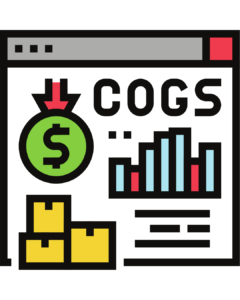
Formula
The formula for calculating the Cost of Goods Sold is:
COGS = Beginning Inventory + Purchases – Ending Inventory
For example, if a company had $10,000 of inventory at the beginning of the month. Purchased $5,000 of additional inventory during the month. And ended the month with $8,000 of inventory. Then its COGS for the month would be $7,000 (10,000+5,000-8,000).
38. Conversion Rate
The Conversion Rate metric measures the percentage of website visitors who take a desired action, such as purchasing or filling out a form. It helps SaaS businesses understand the effectiveness of their marketing and website design in converting visitors into customers. Analyzing this metric, they can make informed decisions about website design, user experience, and marketing strategies.
Formula
The formula for calculating Conversion Rate is
Conversion Rate = (Number of Conversions / Number of Website Visitors) x 100%
For example, if a company had 1,000 website visitors in a month and 50 made a purchase. Then its monthly conversion rate would be 5% (50/1,000 x 100%).
A company might use Conversion Rate to track the effectiveness of its website and optimize it for maximum conversions. Businesses can adjust their website design accordingly by understanding which pages or features convert visitors into customers most effectively.
39. Discount Rate
The Discount Rate is a SaaS financial metric that helps determine the present value of future cash flows. It is an interest rate to discount future cash flows back to their present value. The Discount Rate represents the risk associated with investing in a business. You can use it to calculate future cash flows’ net present value (NPV). This would help you determine the profitability of a project or investment.
Formula
The formula for calculating the Discount Rate is
Discount Rate = Risk-Free Rate + Risk Premium
Risk-Free Rate is the interest rate on a risk-free investment, such as a government bond.
A risk Premium is an additional return required for investing in a risky asset.
Example
Assume a business is considering investing in a new project expected to generate future cash flows of $100,000. The risk-free rate is 2%, and the business applies a 5% risk premium to account for the project’s risk. Therefore, the Discount Rate would be 7%.
Using this Discount Rate, the business can calculate the present value of the future cash flows to determine the profitability of the investment.
40. Discounted Cash Flow Valuation
Discounted Cash Flow Valuation (DCF) is a SaaS financial metric that estimates the value of an investment based on its future cash flows. It calculates the present value of all future cash flows, discounted by the Discount Rate. Commonly, the DCF method helps evaluate the potential profitability of investments, such as stocks, bonds, and real estate.
Formula
The formula for calculating the Discounted Cash Flow Valuation is
DCF = (CF1 / (1+r)^1) + (CF2 / (1+r)^2) + … + (CFn / (1+r)^n)
Where CF1 to CFn are the expected cash flows in each year. And r is the Discount Rate.
Example
Assume a company expects to generate cash flows of $10,000 in the first year, $15,000 in the second year, and $20,000 in the third year. The Discount Rate is 8%. Using the formula for Discounted Cash Flow Valuation, the present value of the cash flows would be:
DCF = (10,000 / (1+0.08)^1) + (15,000 / (1+0.08)^2) + (20,000 / (1+0.08)^3)
= $9,259.259 + $12,860.082 + $15,876.644
= $37,995.985
Therefore, the present value of the future cash flows is $37,995.985.
41. Expansion Revenue
Expansion Revenue is a financial metric measuring the revenue growth generated by existing customers. It is the additional revenue generated by customers who increase their purchases or upgrade to higher-priced products/services. Expansion Revenue is a crucial metric for SaaS companies as it helps to identify the potential for upselling and cross-selling.
Formula
The formula for calculating Expansion Revenue is
Expansion Revenue = (Current Period Revenue – Previous Period Revenue) – Churned Revenue
Where Churned Revenue is the revenue lost due to customer churn.
Example
Assume a SaaS company has 1,000 customers in the current period. They generated revenue of $100,000. In the previous period, the company had 900 customers who generated revenue of $90,000. Additionally, in the current period, 50 customers churned, generating $5,000 in lost revenue. Therefore, the Expansion Revenue for the current period would be:
Expansion Revenue = (100,000 – 90,000) – 5,000
= $5,000
Therefore, the company generated $5,000 in Expansion Revenue in the current period.
42. Gross Margin
Gross Margin is a financial metric that measures the profitability of a company’s products or services after deducting the cost of goods sold (COGS). It represents the percentage of revenue after subtracting the cost of producing or delivering the product or service.
Formula
The formula for calculating Gross Margin is
Gross Margin = (Revenue – COGS) / Revenue
Where Revenue is the total revenue from sales.
COGS is the direct cost of producing or delivering a product or service.
Example
Assume a company generates $500,000 in revenue from the sale of its products. The cost of goods sold (COGS) for these products is $250,000. Therefore, the Gross Margin would be calculated as follows:
Gross Margin = (500,000 – 250,000) / 500,000
= 0.5 or 50%
Therefore, the company’s Gross Margin is 50%.
43. LTV to CAC ratio
The LTV (Lifetime Value) to CAC (Customer Acquisition Cost) ratio is a metric that compares the lifetime value of a customer to the cost of acquiring that customer. It helps businesses determine how much they should spend on acquiring new customers. And how much they can expect to earn from those customers over their lifetime.
Formula
The formula is simply what the name of this metric says: LTV / CAC
For example, if the LTV of a customer is $500, and the CAC is $100. Then the LTV to CAC ratio would be 5 (500/100 = 5). A higher ratio is preferable, as it indicates that the lifetime value of a customer is significantly higher than the cost of acquiring them.
44. Net Profit Margin
Net profit margin is a profitability ratio that measures how much profit a company makes for every dollar of revenue it generates. It is a useful SaaS metric for assessing a business’s overall health and efficiency.
Formula
Net Profit Margin = (Net Income / Revenue) x 100
Example
f a company has a net income of $100,000 and generates $1,000,000 in revenue. Then the net profit margin would be 10% ((100,000/1,000,000) x 100 = 10%).
A real-life example of a SaaS Net Profit Margin metric is Salesforce. It is a cloud-based customer relationship management (CRM) software company. In its 2020 annual report, Salesforce reported a net profit margin of 2.8%. This means that every dollar in revenue generated from their SaaS products could keep $0.028 as profit after all expenses were paid.
To calculate the net profit margin, Salesforce subtracted all of its operating expenses, including research and development, sales and marketing, general and administrative, and other expenses, from its total revenue. The resulting figure was then divided by the total revenue to determine the net profit margin percentage.
This metric is important for investors because it shows how efficiently a company can generate profits from its revenue. A high net profit margin indicates that a company efficiently manages its costs and generates profits from its operations. It also helps investors compare the profitability of different companies within the same industry.
In the case of Salesforce, their 2.8% net profit margin may seem low compared to other companies in different industries with higher margins. However, it’s important to note that SaaS companies typically have lower margins due to ongoing investment in research and development and customer acquisition costs.
45. NRR (Net Revenue Retention)
NRR is a metric SaaS businesses use to track the revenue retained from existing customers after accounting for any lost revenue due to customer churn or downgrades. It provides insight into the effectiveness of the company’s customer retention strategies.
Formula
NRR = (Total Revenue from Existing Customers – Revenue Lost from Existing Customers) / Total Revenue from Existing Customers
For example, if a SaaS company generates $1 million in revenue from existing customers in a year. Then loses $100,000 in revenue due to churn or downgrades. The NRR would be 90% ((1,000,000 – 100,000) / 1,000,000 = 0.9).
46. Revenue Budget Completion
Revenue budget completion is a metric that compares the actual revenue generated by a company to its projected revenue for a specific period. It provides insight into the accuracy of the company’s revenue forecasting. It helps to identify any areas where revenue goals were not met.
Formula
Revenue Budget Completion = Actual Revenue / Projected Revenue x 100
For example, if a company expects to generate $1 million in revenue for a quarter. But only generated $900,000, the revenue budget completion would be 90% ((900,000 / 1,000,000) x 100 = 90%).
47. ROI
ROI stands for Return on Investment and is a financial metric that calculates the profitability of an investment. It measures the amount of return on an investment relative to its cost. The ROI metric helps businesses determine their investments’ efficiency by comparing an investment’s net profit to the initial cost. A higher ROI means a more profitable investment. The formula for ROI is:
ROI = (Net Profit / Cost of Investment) x 100%
For example, if a company invests $10,000 in a marketing campaign and receives $15,000 in revenue. Then the net profit is $5,000. To calculate the ROI, we divide $5,000 by $10,000 and multiply by 100%, resulting in an ROI of 50%.
The ROI metric is useful for SaaS businesses to assess the profitability of investments, such as marketing campaigns, product development, and new technology. By analyzing the ROI of different investments, SaaS businesses can prioritize their investments and focus on those that provide the highest return.
48. Rule of 40
The Rule of 40 is a SaaS metric that helps businesses determine their overall health and growth potential by balancing revenue growth and profitability. It states that the sum of a company’s revenue growth rate and profitability (measured by EBITDA margin) should be at least 40%.
Formula
Rule of 40 = Revenue Growth Rate + EBITDA Margin
For example, if a company has a revenue growth rate of 30% and an EBITDA margin of 15%. Then the Rule of 40 is 45%. This indicates that the company is healthy and has growth potential.
The Rule of 40 metric is useful for SaaS companies to evaluate their overall performance and identify areas for improvement. It helps businesses strike a balance between revenue growth and profitability, ensuring that they are not sacrificing profitability for growth.
49. SaaS Quick Ratio
The SaaS Quick Ratio is a financial metric that helps SaaS companies assess their ability to cover short-term liabilities using their liquid assets. It is similar to the traditional quick ratio other businesses use. But it is tailored to the unique financial characteristics of SaaS companies.
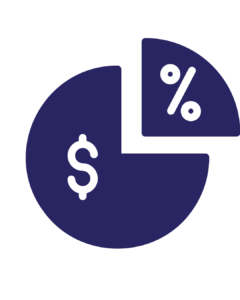
Formula
SaaS Quick Ratio = (Current Assets – Prepaid Expenses – Deferred Revenue) / Current Liabilities
For example, if a company has $100,000 in current assets, $10,000 in prepaid expenses, $20,000 in deferred revenue, and $50,000 in current liabilities. Then the SaaS Quick Ratio would be 1.6.
A SaaS Quick Ratio above 1 indicates the company has sufficient liquid assets to cover its short-term liabilities. A ratio below 1 indicates that the company may struggle to pay its debts on time.
The SaaS Quick Ratio metric is useful for SaaS companies to assess their short-term liquidity and make informed decisions about their cash flow management.
50. Sales Rep Ramp
Sales Rep Ramp is a metric sales organizations use to measure the time it takes for new sales representatives to become fully productive and generate revenue for the company. It helps businesses understand the effectiveness of their sales training programs, onboarding processes, and overall sales strategy.
Formula
The formula for Sales Rep Ramp is simple: divide the revenue generated by a new sales rep by the ramp-up time (in months). You would get the monthly revenue generated during the ramp-up period.
Sales Rep Ramp = Revenue Generated by New Sales Rep / Ramp-Up Time
For example, if a new sales rep generates $50,000 in revenue during a six-month ramp-up period. Then the Sales Rep Ramp is $8,333 monthly ($50,000 / 6 = $8,333).
The Sales Rep Ramp metric is useful for businesses to assess the effectiveness of their sales training programs and identify areas for improvement. By understanding how quickly new reps are ramping up and generating revenue, businesses can adjust their onboarding processes to ensure that new hires are productive as soon as possible.
51. Sensitivity Analysis
Sensitivity analysis is a financial modeling technique that examines how changes in an input variable affect the output of a financial model. It is a way to test the assumptions underlying a financial model and to identify the variables that have the greatest impact on the model’s results. Sensitivity analysis is particularly useful in SaaS businesses. Where the accuracy of revenue and cost projections can be difficult to predict. By testing different scenarios, SaaS companies can identify the key drivers of their financial performance. And make better-informed decisions about resource allocation.
Conducting a sensitivity analysis involves varying one or more input variables. Then observing the effect on the output variable. You can do it manually by adjusting the values in a financial model and observing the changes in the output. Or you can automate it using specialized software, such as Financli. By examining different scenarios, SaaS companies can identify the range of potential outcomes and the likelihood of each scenario occurring.
52. Unit Cost
Unit cost is a metric that measures the average cost of producing one unit of a product or service. In SaaS businesses, the unit cost often measures the cost of delivering a subscription service to a single customer. Calculating unit cost can help SaaS companies identify opportunities to reduce costs and improve profitability.
The formula for calculating unit cost is:
Unit Cost = Total Cost / Number of Units Produced
For example, if a SaaS company spends $10,000 monthly on server costs and has 1,000 subscribers. Then the unit cost would be $10 per subscriber ($10,000 / 1,000 = $10).
By analyzing the unit cost, SaaS companies can identify the cost drivers and work on reducing them. You can achieve this through various measures, such as negotiating better deals with suppliers or optimizing internal processes. By reducing the unit cost, SaaS companies can improve their profit margins and become more competitive.
Conclusion
So, these were all the SaaS metrics we could possibly list for you. The extensive list that our experts have compiled doesn’t leave anything undiscovered. If you are a SaaS business owner, you would be amazed at how easy it would make your life if you truly implement these metrics. Not only does this detailed guide provide you with all the SaaS metrics, but it also explains each term comprehensively.
SaaS financial metrics are essential for any SaaS business and help in predicting future performance and charting a course for success. With due diligence and proper implementation of SaaS metrics, CFOs, and SaaS entrepreneurs can maximize the potential of their businesses.
We hope this guide has been informative for you and wish you luck in your journey toward SaaS success. Happy Tracking!

